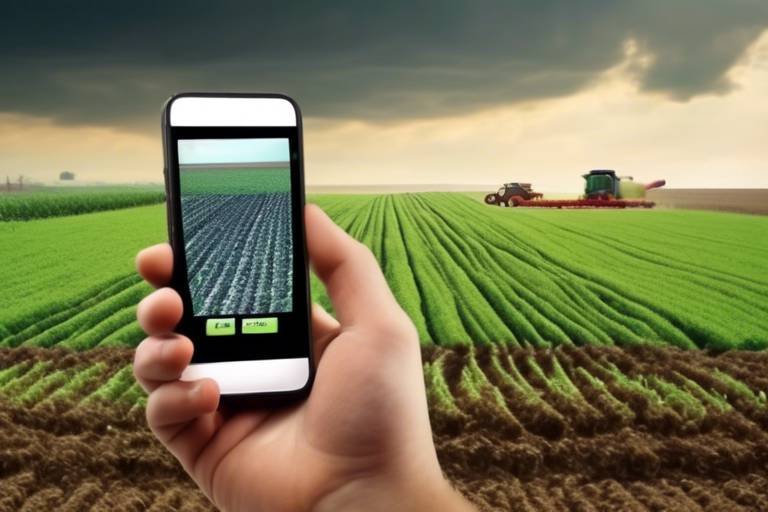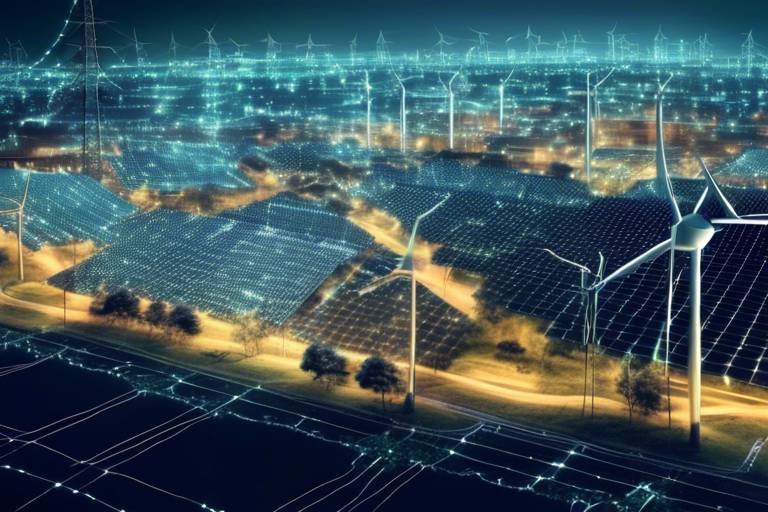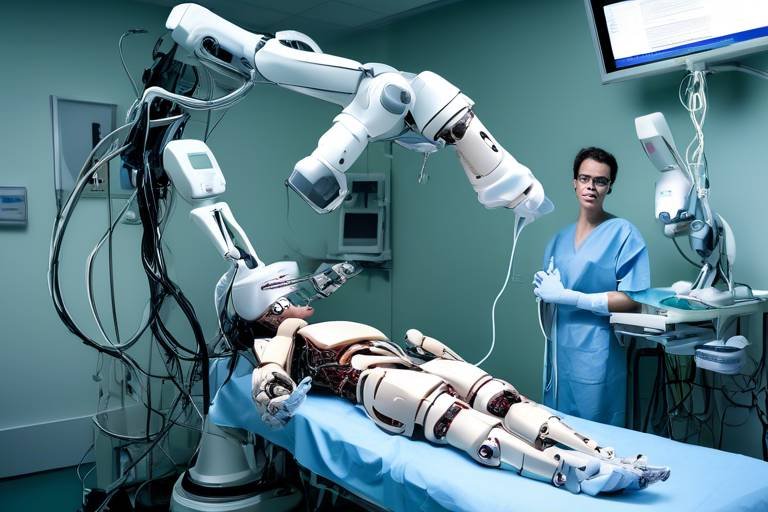The Role of Robotics in Agriculture
Robotics is not just a buzzword anymore; it's a game-changer in the agricultural sector. As farmers face an uphill battle with labor shortages and the increasing demand for food production, robotics is stepping in to revolutionize how we grow and harvest crops. Imagine a world where tractors drive themselves, drones monitor fields, and robots pick fruits with precision. This isn't science fiction; it's happening right now! The integration of robotics in agriculture is enhancing operational efficiency, reducing costs, and ensuring that crops are harvested at the optimal time, ultimately leading to a more sustainable farming environment.
One of the most exciting aspects of robotics in agriculture is its ability to tackle the challenges that traditional farming methods face. For instance, with the global population projected to reach 9.7 billion by 2050, the demand for food is skyrocketing. Farmers need to produce more with less, and that's where robotics comes into play. By automating various farming processes, from planting to harvesting, farmers can increase their yields while minimizing their labor costs. It's like having a team of tireless workers who never need a coffee break!
However, the journey into the world of agricultural robotics is not without its hurdles. While the benefits are clear, the initial investment in robotic technology can be daunting for many farmers. Additionally, technical limitations and the need for regular maintenance can pose challenges that may slow down widespread adoption. Yet, as technology continues to evolve, these barriers are likely to diminish, paving the way for a future where robotics becomes an integral part of every farm.
In summary, the role of robotics in agriculture is multifaceted and transformative. From enhancing crop management to improving harvesting techniques, robotics promises to change the face of farming as we know it. As we delve deeper into this topic, we'll explore how automation is reshaping crop management, the sophisticated techniques behind robotic harvesting, and the future trends that could revolutionize agriculture even further.
- What are the main benefits of using robotics in agriculture? Robotics can increase efficiency, reduce labor costs, and improve crop yields.
- What types of crops can be harvested by robots? There are specialized robots for various crops, including fruits, vegetables, and grains.
- Are there any challenges associated with agricultural robotics? Yes, challenges include high initial costs, technical limitations, and maintenance needs.
- How do drones contribute to agricultural practices? Drones are used for monitoring crop health, assessing field conditions, and even planting seeds.
- What is the future of robotics in agriculture? The future looks promising with advancements in AI and machine learning that will further enhance farming practices.

Automation in Crop Management
Automation technologies are revolutionizing the way we manage crops, paving the way for a new era in agriculture. Imagine a farm where every seed is planted with precision, where water is delivered exactly when and where it's needed, and where harvesting is done at the perfect moment to ensure maximum yield. This is not just a dream; it's becoming a reality thanks to advanced robotics and automation technologies.
At the heart of this transformation is the ability to collect and analyze data in real-time. With automated systems, farmers can monitor their fields with unprecedented accuracy. For instance, sensors placed throughout the fields can provide vital information about soil moisture levels, nutrient content, and even pest activity. This data allows farmers to make informed decisions that can significantly enhance productivity and sustainability.
One of the most significant advantages of automation in crop management is the reduction in labor costs. Traditional farming methods often require a large workforce, which can be challenging to maintain, especially in regions facing labor shortages. By integrating automation, farmers can streamline their operations, allowing them to do more with less. For example, automated irrigation systems can adjust water supply based on real-time soil conditions, ensuring that crops receive the right amount of water without the need for constant human oversight.
Furthermore, automated planting technologies are making waves in the agricultural sector. These systems can plant seeds with remarkable precision, ensuring optimal spacing and depth. This not only maximizes the use of available land but also promotes healthier plant growth. The result? Higher yields and a more sustainable approach to farming. In fact, studies have shown that farms utilizing automation can increase their yields by as much as 20-30% compared to traditional methods.
However, it's essential to recognize that while automation is a powerful tool, it is not without its challenges. The initial investment in these technologies can be significant, and farmers must also consider the ongoing costs of maintenance and operation. Yet, as the technology continues to evolve and become more accessible, the barriers to entry are gradually lowering.
In summary, the integration of automation in crop management is not just a trend; it is a fundamental shift in how we approach agriculture. By leveraging technology to enhance efficiency and reduce labor costs, farmers are better equipped to meet the growing demands of food production. As we look to the future, the role of automation in agriculture will undoubtedly continue to expand, leading to more sustainable and productive farming practices.
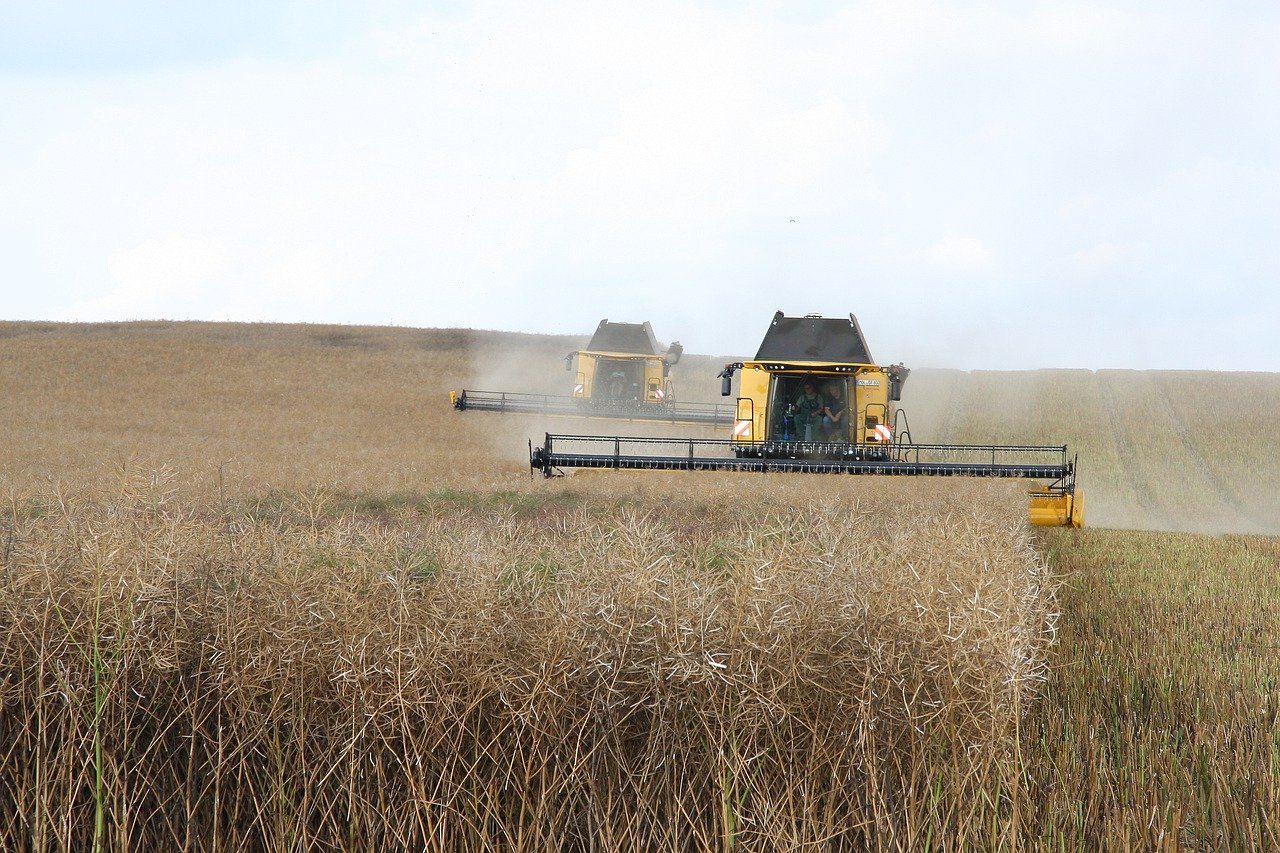
Robotic Harvesting Techniques
In the ever-evolving landscape of agriculture, are taking center stage, bringing a wave of innovation that promises to redefine how we gather crops. Imagine a field where robots work tirelessly, their mechanical arms deftly plucking ripe fruits and vegetables with precision that would make any human envious. This isn't science fiction; it's the reality of modern farming. These advanced machines not only increase efficiency but also minimize waste, ensuring that every harvest is maximized.
One of the most impressive aspects of these robotic systems is their ability to adapt to various crops. Different types of harvesting robots are designed with specific functionalities in mind, catering to the unique needs of the produce they are tasked with collecting. For instance, fruit-picking robots are equipped with advanced sensors and algorithms that enable them to identify ripe fruits while avoiding those that are not yet ready for harvest. This selective approach ensures minimal damage to the plants, preserving the health of the crops for future yields.
Additionally, vegetable harvesting solutions employ robotic arms and conveyor systems that streamline the collection process. These robots can work in tandem with one another, creating a synchronized ballet of machinery that efficiently gathers vegetables from the field. This not only reduces the need for manual labor but also increases operational efficiency, allowing farmers to focus on other essential tasks.
However, it’s crucial to acknowledge the challenges that come with implementing these technologies. The initial costs for robotic harvesting systems can be daunting, and technical limitations may hinder their effectiveness in certain conditions. Moreover, ongoing maintenance is necessary to keep these machines running smoothly, which can be an additional burden for farmers. Despite these hurdles, the potential benefits of robotic harvesting techniques are too significant to ignore.
| Type of Robot | Functionality | Advantages |
|---|---|---|
| Fruit-Picking Robots | Identifies and selectively harvests ripe fruits | Minimizes plant damage, increases harvest efficiency |
| Vegetable Harvesting Robots | Utilizes robotic arms for collection | Reduces manual labor, enhances operational efficiency |
As we look to the future, it’s clear that robotic harvesting techniques will continue to evolve. With advancements in artificial intelligence and machine learning, these robots will become even more sophisticated, capable of handling a wider variety of tasks and adapting to changing agricultural environments. The integration of these technologies promises to not only enhance productivity but also ensure that we can meet the growing food demands of a burgeoning global population.
In conclusion, the role of robotic harvesting techniques in agriculture cannot be overstated. They represent a significant step toward a more efficient, sustainable, and productive farming industry. As these technologies continue to advance, we can expect to see a transformation in how we approach food production, ultimately benefiting farmers and consumers alike.

Types of Harvesting Robots
The world of agriculture has seen a remarkable transformation with the introduction of harvesting robots. These machines are not just a passing trend; they represent a significant leap towards efficiency and sustainability in farming. But what exactly are the types of harvesting robots out there? Each type is designed to cater to specific crops and employs unique technologies that enhance their efficiency and effectiveness in the harvesting process. Let's dive into some of the most prominent types of harvesting robots currently making waves in the agricultural sector.
First up, we have fruit-picking robots. These innovative machines are equipped with advanced sensors and algorithms that enable them to identify ripe fruits with precision. Imagine a robot that can distinguish between a perfectly ripe peach and an underdeveloped one, ensuring that only the best fruits are harvested. This not only minimizes waste but also reduces the potential damage to the plants. With their ability to work around the clock, fruit-picking robots are becoming essential allies for farmers looking to optimize their harvests.
Next, we have vegetable harvesting solutions. These robots utilize sophisticated robotic arms and conveyor systems to streamline the collection of various vegetables. Picture a scene where a robot efficiently picks cucumbers or carrots, reducing the need for manual labor. This technology not only increases operational efficiency but also allows farmers to allocate their workforce to other critical tasks. The combination of speed and accuracy in vegetable harvesting means less time spent in the fields and more time focusing on other aspects of farm management.
Furthermore, there are multi-crop harvesting robots that are designed to handle a variety of crops. These versatile machines are equipped with interchangeable tools and attachments, allowing them to adapt to different harvesting tasks. This flexibility is crucial, especially for farms that grow multiple types of crops, as it reduces the need for different specialized equipment. Farmers can save on costs and space by investing in these multi-functional harvesting robots.
In addition to these, there are also autonomous mobile robots that can navigate fields independently. These robots are equipped with GPS technology and can be programmed to follow specific routes, making them ideal for large-scale farms. They can perform tasks such as transporting harvested crops to storage areas, thus streamlining the overall harvesting process.
In summary, the types of harvesting robots are diverse and cater to various agricultural needs. As technology continues to advance, we can expect even more innovative solutions to emerge, making farming more efficient and sustainable. The future looks bright for harvesting robotics, and it's exciting to think about how they will continue to shape the agricultural landscape.
- What are harvesting robots? Harvesting robots are automated machines designed to assist in the collection of crops, improving efficiency and reducing labor costs.
- How do fruit-picking robots work? They use advanced sensors and algorithms to identify ripe fruits and selectively harvest them without damaging the plants.
- Are harvesting robots expensive? Yes, the initial investment can be high, but they often lead to long-term savings in labor and increased productivity.
- Can harvesting robots work in different weather conditions? Many harvesting robots are designed to operate in various weather conditions, but extreme weather may still pose challenges.
- What is the future of agricultural robotics? The future looks promising with advancements in AI and machine learning, which will further enhance the capabilities of harvesting robots.

Fruit-Picking Robots
Imagine walking through an orchard where robots are diligently working alongside farmers, picking ripe fruits with the precision and care of a seasoned expert. are at the forefront of this agricultural revolution, equipped with advanced sensors and algorithms that allow them to identify and selectively harvest fruits at their peak ripeness. These robots are not just a fancy gadget; they represent a significant leap towards solving labor shortages and increasing efficiency in the agricultural sector.
One of the standout features of these robots is their sophisticated vision systems. Using a combination of computer vision and machine learning, they can assess the color and size of fruits to determine if they are ready for harvest. This technology mimics the human ability to judge ripeness but does so with greater consistency and speed. Farmers can now harvest their crops with minimal damage, ensuring that the fruits maintain their quality and market value.
Moreover, these robots are designed to handle various types of fruits, from delicate strawberries to robust apples. Each type of fruit requires a unique approach to harvesting, and manufacturers have developed specialized robots tailored to meet these needs. For instance, a robot designed for apple picking might have a different gripping mechanism compared to one intended for berry picking. This adaptability not only enhances efficiency but also minimizes the risk of bruising or damaging the produce.
However, it’s not just about picking fruits; these robots often come with integrated systems that can monitor the health of the plants. By analyzing data on fruit yield and plant conditions, farmers can make informed decisions about irrigation, fertilization, and pest control. The synergy between fruit-picking robots and data analytics is paving the way for a more sustainable agricultural practice, where every fruit picked contributes to a larger ecosystem of efficiency and productivity.
While the benefits are substantial, it's essential to acknowledge that the implementation of fruit-picking robots comes with its own set of challenges. The initial investment can be significant, and farmers may need to adapt their existing systems to integrate these new technologies. Additionally, ongoing maintenance and software updates are crucial to ensure that the robots operate at their best. Nonetheless, as technology continues to advance and costs decrease, the adoption of fruit-picking robots is likely to become more widespread.
In conclusion, fruit-picking robots are not just a trend; they are a glimpse into the future of agriculture. With their ability to enhance efficiency, reduce labor costs, and improve the quality of harvested fruits, these robots are set to play a crucial role in meeting the growing demands of the global food supply. As we look ahead, it’s exciting to think about how these technological marvels will continue to evolve and shape the way we approach farming.
- What types of fruits can be harvested by robots?
Fruit-picking robots are designed for a variety of fruits, including apples, strawberries, cherries, and more. Each robot is tailored to the specific needs of the fruit it harvests.
- Are fruit-picking robots cost-effective?
While the initial investment can be high, the long-term savings in labor costs and increased efficiency often make them a worthwhile investment for farmers.
- How do these robots ensure minimal damage to fruits?
Fruit-picking robots utilize advanced sensors and soft-gripping mechanisms to gently harvest fruits, significantly reducing the risk of bruising or damage.
- Can fruit-picking robots monitor plant health?
Yes, many fruit-picking robots are equipped with technology that allows them to analyze plant health, providing farmers with valuable data to improve overall crop management.

Vegetable Harvesting Solutions
As we delve into the realm of , it's essential to recognize the remarkable innovations reshaping this sector. Gone are the days when farmers relied solely on manual labor to gather crops. Today, advanced robotics are taking center stage, offering a blend of efficiency and precision that traditional methods simply can't match. Imagine a field where robots equipped with sophisticated sensors and algorithms seamlessly navigate rows of vegetables, identifying the perfect moment to harvest. This not only boosts productivity but also minimizes waste, ensuring that every vegetable is picked at its peak ripeness.
These robotic systems are designed with flexibility in mind, allowing them to adapt to various types of vegetables, from delicate leafy greens to robust root crops. For instance, some robots utilize robotic arms that mimic human motion, gently plucking vegetables without causing damage. Others incorporate conveyor systems that streamline the collection process, transporting vegetables from the field directly to packaging areas, thereby reducing the time from harvest to market.
One of the standout features of these vegetable harvesting solutions is their ability to operate in diverse weather conditions. Imagine a rainy day where human workers would struggle; these robots can continue their tasks, ensuring that crops do not go unharvested. Furthermore, they can be programmed to work around the clock, maximizing efficiency and output.
However, it's not just about speed and efficiency. The integration of data analytics into these systems allows farmers to monitor their operations in real-time. This means that farmers can receive instant feedback on the health of their crops, the efficiency of the harvesting process, and even suggestions for improvements. The result? A more informed approach to farming that can lead to higher yields and better quality produce.
To give you a clearer picture of how these solutions operate, consider the following table that outlines the key components of robotic vegetable harvesting systems:
| Component | Description | Benefits |
|---|---|---|
| Robotic Arms | Mechanical arms designed to mimic human movements for precise harvesting. | Minimizes damage to crops and increases picking speed. |
| Sensors | Advanced sensors that detect ripeness and identify the best harvesting time. | Ensures optimal quality of harvested vegetables. |
| Conveyor Systems | Automated systems that transport harvested vegetables to packaging. | Reduces labor costs and speeds up the post-harvest process. |
In conclusion, vegetable harvesting solutions are revolutionizing the agricultural landscape, offering farmers a way to enhance productivity while addressing labor shortages. With the ability to operate efficiently under various conditions and the integration of real-time data analytics, these robotic systems are not just tools; they are partners in the quest for sustainable and profitable farming.
- What types of vegetables can be harvested using robots? Robotic systems can be designed to harvest a variety of vegetables, including leafy greens, tomatoes, peppers, and root vegetables.
- Are robotic harvesting solutions cost-effective? While the initial investment can be significant, the long-term savings on labor costs and increased efficiency often justify the expense.
- How do these robots adapt to different farming conditions? Many robotic systems are equipped with advanced sensors and AI that allow them to analyze and respond to varying environmental conditions.
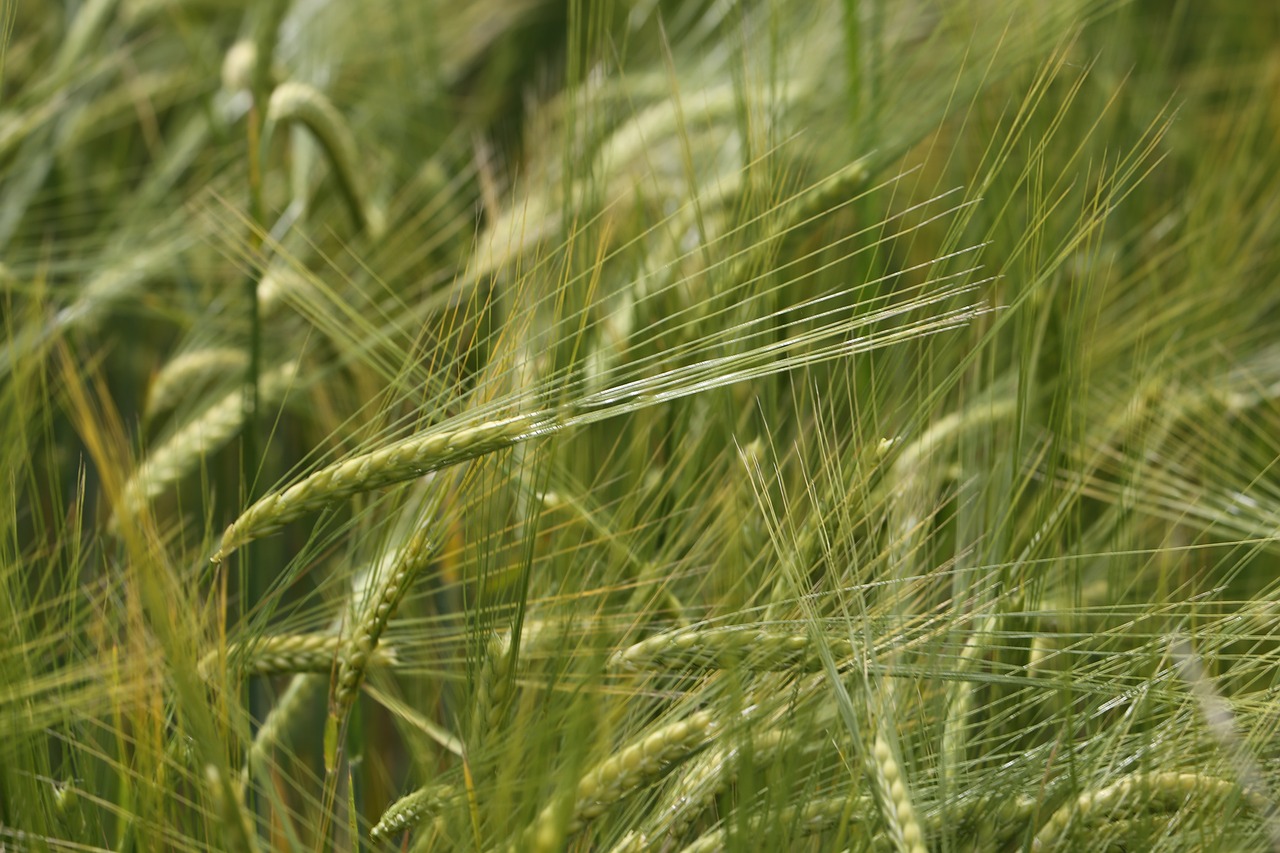
Challenges in Robotic Harvesting
While the advancements in robotic harvesting technologies are nothing short of remarkable, they are not without their challenges. One of the most significant hurdles is the high initial investment cost. Farmers often face a steep price tag when integrating robotic systems into their operations, which can be a barrier, especially for smaller farms. This upfront cost can make it difficult for many to justify the transition from traditional methods to automated solutions.
Moreover, there are technical limitations that can complicate the deployment of these robots. For instance, the varying shapes, sizes, and conditions of crops can pose a challenge for robotic systems that rely on precise algorithms to identify and harvest produce. A robot that works efficiently in one type of field may struggle in another, leading to inconsistent results and potentially wasted resources.
Another critical aspect to consider is the ongoing maintenance required for these sophisticated machines. Like any technology, robots need regular servicing and updates to function optimally. This requirement can add another layer of complexity and cost for farmers who may already be stretched thin with their daily operations. Additionally, finding skilled technicians to perform these maintenance tasks can be a challenge in rural areas.
Lastly, there is the issue of public perception. Some consumers and farmers may feel apprehensive about the increasing reliance on robots in agriculture. Concerns about job losses and the quality of produce harvested by machines can create resistance to adopting these technologies. To address this, it’s essential for the agricultural sector to communicate the benefits of robotic harvesting, such as increased efficiency and sustainability, to alleviate fears and promote understanding.
In summary, while robotic harvesting presents exciting opportunities for the future of agriculture, it also faces significant challenges that need to be addressed. From high costs and technical limitations to maintenance needs and public perception, overcoming these hurdles will be crucial for the widespread adoption of robotic solutions in farming.
- What are the main benefits of robotic harvesting? Robotic harvesting enhances efficiency, reduces labor costs, and minimizes waste by ensuring timely and precise harvesting of crops.
- How much does it cost to implement robotic harvesting? The initial investment can vary significantly based on the technology used and the scale of the operation, but it can be a substantial financial commitment.
- Are there specific crops better suited for robotic harvesting? Yes, certain crops like fruits and vegetables are being targeted with specialized robots designed to handle their unique harvesting needs.
- What skills are needed to maintain harvesting robots? Technicians with expertise in robotics, mechanics, and software are typically required to maintain and repair these advanced machines.
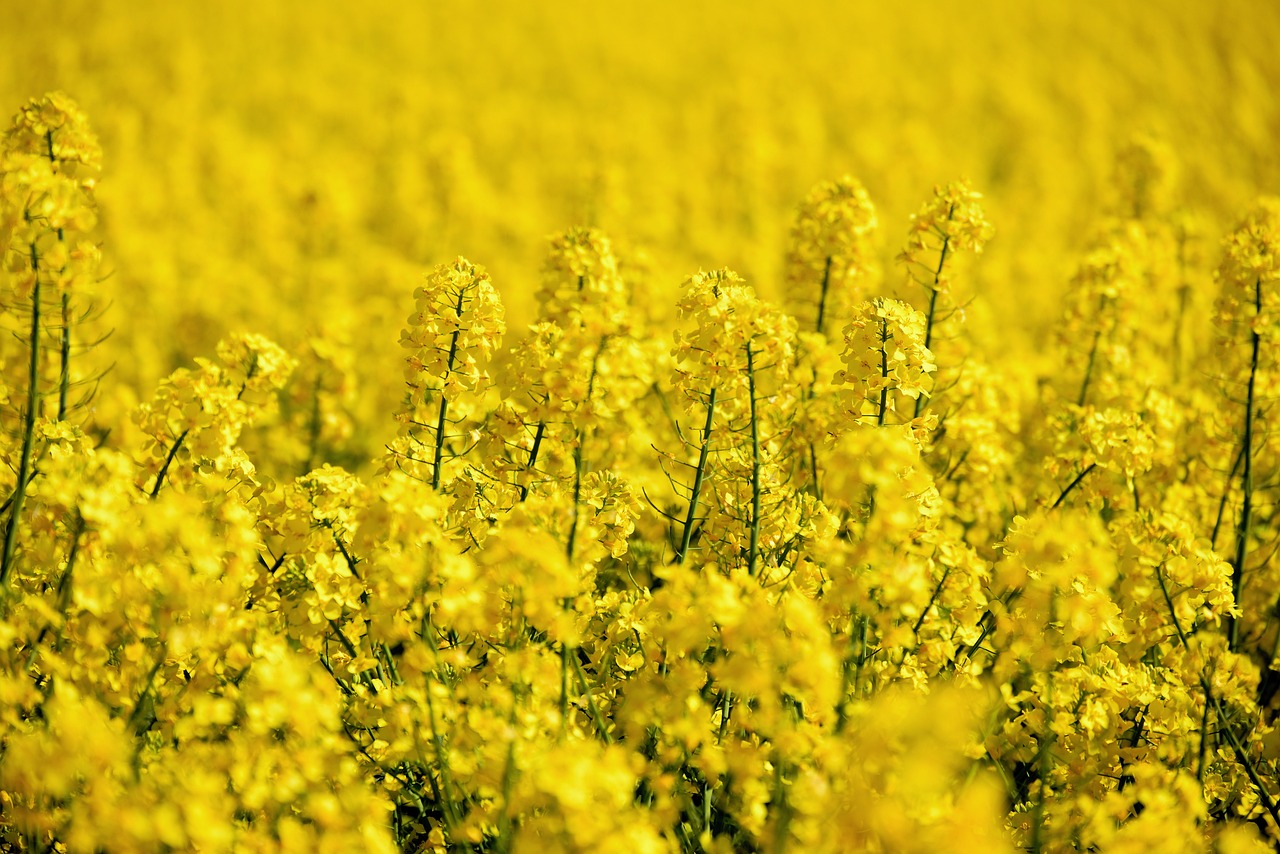
Precision Agriculture Technologies
The world of farming is undergoing a remarkable transformation, thanks to . These innovative tools and techniques are enabling farmers to optimize their practices, leading to better yields and sustainable farming. But what exactly is precision agriculture? In simple terms, it refers to the use of technology to monitor and manage agricultural production in a more precise manner. Imagine having the ability to know exactly how much water, fertilizer, or pesticide your crops need at any given time—this is the power of precision agriculture.
One of the standout features of precision agriculture is its integration with robotics and data analytics. By utilizing advanced sensors, GPS technology, and data analysis, farmers can make informed decisions that enhance productivity while minimizing waste. For instance, consider a farmer who uses drones equipped with high-resolution cameras to survey their fields. These drones can identify areas that require more attention, whether it's a patch of crops that needs watering or a section that’s suffering from pest infestations. This level of insight allows for targeted interventions, which can significantly boost crop health and yield.
Moreover, the role of robotic systems in precision agriculture cannot be overstated. These systems are designed to perform specific tasks with high accuracy. For example, soil monitoring robots can assess various soil parameters, such as moisture levels and nutrient content, providing farmers with real-time data. With this information, farmers can apply fertilizers and water more efficiently, reducing costs and enhancing crop growth. The use of these technologies not only increases efficiency but also promotes sustainable farming practices by minimizing the environmental impact.
As we delve deeper into the world of precision agriculture, it’s essential to acknowledge the various technologies that make it possible. Here are some key components:
- GPS Technology: Allows for precise tracking and mapping of fields, enabling farmers to apply inputs exactly where needed.
- Remote Sensing: Utilizes satellite or drone imagery to monitor crop health and soil conditions.
- Data Analytics: Involves analyzing collected data to make informed decisions about crop management.
- Robotic Systems: Automates tasks like planting, watering, and harvesting, increasing efficiency and reducing labor costs.
In addition to these technologies, the future of precision agriculture looks bright with the ongoing advancements in artificial intelligence (AI) and machine learning. These technologies are expected to further enhance the capabilities of agricultural robots and systems, allowing for even more sophisticated data analysis and decision-making processes. Imagine a future where a farmer can predict the best time to plant or harvest based on historical data and real-time weather conditions—this is the potential of precision agriculture.
In conclusion, precision agriculture technologies are not just a trend; they represent a significant shift towards more efficient, sustainable, and productive farming practices. As farmers continue to embrace these innovations, we can expect to see improvements in food security and environmental sustainability, ensuring that we can feed a growing global population while protecting our planet.
Q: What is precision agriculture?
A: Precision agriculture is a farming management concept that uses technology to monitor and manage agricultural production with high accuracy.
Q: How do drones contribute to precision agriculture?
A: Drones are used for surveying fields, monitoring crop health, and even planting seeds, providing valuable insights that help farmers make informed decisions.
Q: What are the benefits of using robotic systems in agriculture?
A: Robotic systems enhance efficiency by automating tasks such as planting, watering, and harvesting, which reduces labor costs and increases productivity.
Q: Are there any challenges associated with precision agriculture?
A: Yes, challenges include high initial costs, the need for technical expertise, and ongoing maintenance of advanced technologies.

Drone Technology in Agriculture
Drones are not just for capturing breathtaking aerial views or delivering packages; they are becoming a game-changer in the agricultural sector! Imagine a farmer soaring above their fields, equipped with a high-tech drone that can monitor crop health, assess field conditions, and even plant seeds! This is not science fiction; it's the reality of modern farming. Drones provide farmers with invaluable insights that were once only possible through labor-intensive methods.
One of the most significant advantages of using drones in agriculture is their ability to collect real-time data. With high-resolution cameras and advanced sensors, drones can scan vast areas of farmland in a fraction of the time it would take a human. They can identify areas that need attention, such as spots lacking nutrients or those that are overwatered. This allows farmers to take immediate action, ensuring that their crops receive the care they need to thrive.
Furthermore, drones can help in precision agriculture, where data-driven decisions lead to optimized farming practices. For instance, by analyzing aerial images, farmers can determine the best planting strategies, monitor crop growth, and even predict yields. This level of analysis not only increases productivity but also reduces waste and conserves resources, which is essential in our fight against climate change.
Here's a quick overview of how drones are utilized in agriculture:
| Use Case | Description |
|---|---|
| Crop Monitoring | Drones can capture detailed images and data about crop health, allowing for timely interventions. |
| Field Mapping | They create precise maps of fields, helping farmers plan planting and harvesting schedules. |
| Soil Analysis | Drones equipped with sensors can analyze soil conditions, informing farmers about nutrient levels. |
| Seed Planting | Some drones can even plant seeds, making the process faster and more efficient. |
However, while drone technology offers numerous benefits, it's not without its challenges. Farmers must consider the initial investment costs, the need for training to operate these devices, and the regulations surrounding their use. Despite these hurdles, the potential for drones to revolutionize agriculture is undeniable.
In summary, drone technology in agriculture is paving the way for smarter, more efficient farming practices. As technology continues to advance, we can expect to see even more innovative applications of drones that will help farmers increase productivity while also promoting sustainability. The sky truly is the limit!
- What are the main benefits of using drones in agriculture? Drones provide real-time data, enhance precision agriculture, and can increase efficiency in monitoring and managing crops.
- Are drones expensive to operate? While the initial investment can be high, the long-term savings and increased yields often outweigh the costs.
- Do I need special training to use a drone in agriculture? Yes, operating a drone typically requires some training to ensure safe and effective use.
- What types of crops can drones help monitor? Drones can be used for a wide variety of crops, including fruits, vegetables, and grains.
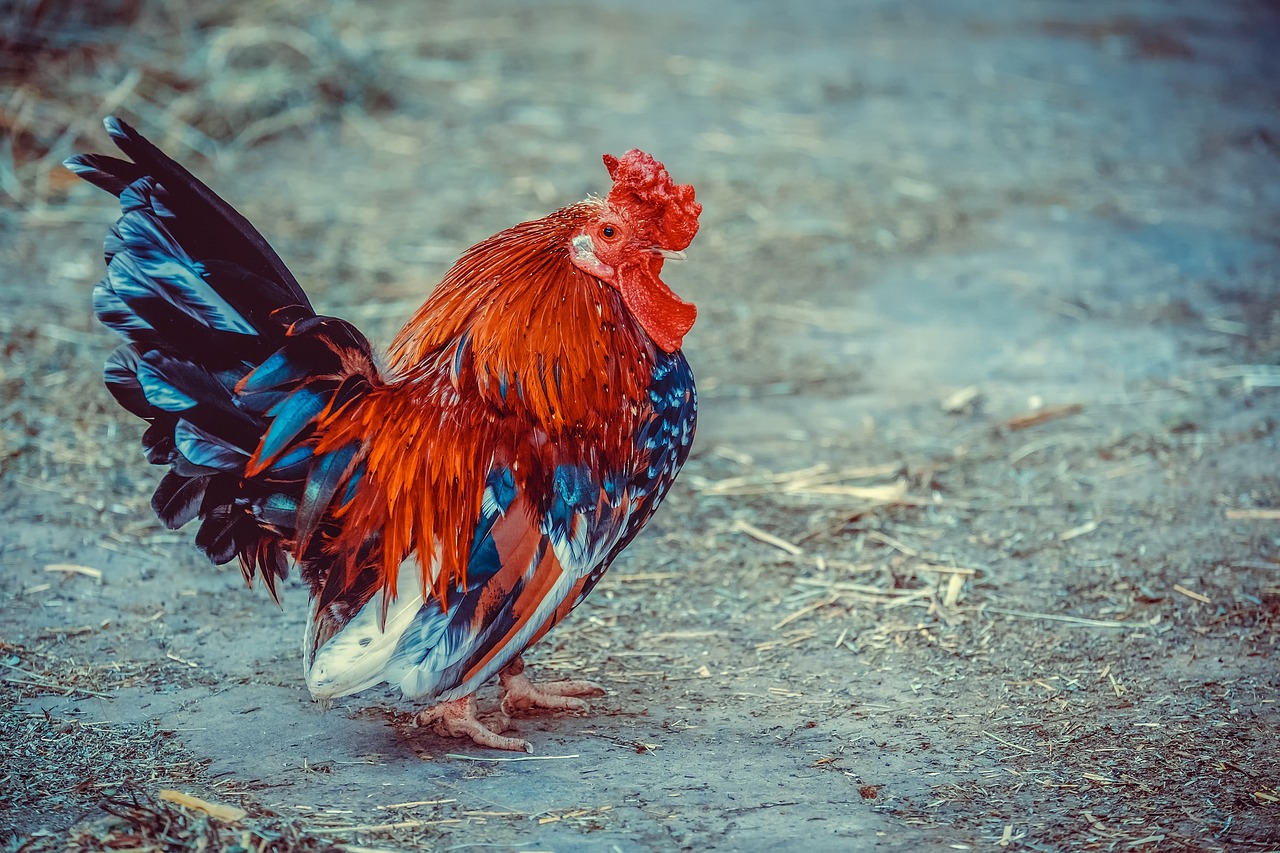
Soil Monitoring Robots
Soil monitoring robots are revolutionizing the way farmers approach crop management and sustainability. Imagine having a diligent assistant that never tires, tirelessly analyzing the ground beneath your feet. These advanced machines are equipped with a variety of sensors and technologies that allow them to assess soil conditions, moisture levels, and nutrient content with incredible precision. By providing real-time data, these robots enable farmers to make informed decisions that directly impact crop health and yield.
One of the most significant advantages of using soil monitoring robots is their ability to reduce waste. Traditional farming methods often rely on generalized schedules for watering and fertilizing, which can lead to overuse or underuse of resources. In contrast, soil monitoring robots can pinpoint the exact needs of the soil at any given moment. This means that farmers can apply water and nutrients only when necessary, resulting in a more sustainable approach that conserves resources and enhances crop growth.
These robots work by employing a combination of technologies, including GPS, remote sensing, and data analytics. They navigate the fields, collecting data that is then analyzed to provide insights into soil health. For instance, if a robot detects low nitrogen levels in a specific area, it can alert the farmer, who can then take action to address the issue before it impacts crop yield. This proactive approach not only saves time but also maximizes productivity.
Moreover, soil monitoring robots can operate in various environmental conditions, making them versatile tools for farmers. Whether it’s a dry summer or a rainy season, these robots can adapt to different situations, ensuring that the soil is always in optimal condition for planting and growth. This adaptability is crucial as climate change continues to affect agricultural practices worldwide.
However, the integration of soil monitoring robots into farming is not without its challenges. The initial investment can be substantial, and farmers must also consider the ongoing maintenance and training required to operate these advanced systems effectively. Yet, the long-term benefits often outweigh these concerns, as the data-driven insights provided by these robots can lead to significant cost savings and increased yields over time.
In conclusion, soil monitoring robots are paving the way for a new era in agriculture. By harnessing the power of technology, farmers can optimize their practices, reduce waste, and ultimately contribute to a more sustainable food system. As these technologies continue to evolve, we can expect even greater advancements that will further enhance the efficiency and effectiveness of agricultural practices.
- What are soil monitoring robots?
Soil monitoring robots are advanced machines equipped with sensors that analyze soil conditions, moisture levels, and nutrient content to provide real-time data to farmers. - How do soil monitoring robots improve farming practices?
These robots help farmers make informed decisions about watering and fertilizing, reducing waste and enhancing crop growth. - Are soil monitoring robots expensive?
While the initial investment can be high, the long-term benefits often result in cost savings and increased yields, making them a worthwhile investment. - Can these robots operate in different weather conditions?
Yes, soil monitoring robots are designed to adapt to various environmental conditions, ensuring optimal soil management year-round.

Future Trends in Agricultural Robotics
The future of agricultural robotics is not just bright; it’s practically glowing with potential! As technology continues to advance at breakneck speed, the landscape of farming is set to undergo a radical transformation. Imagine a world where farmers rely on smart machines to handle everything from planting to harvesting, all while making data-driven decisions that enhance productivity and sustainability. This isn’t science fiction; it’s the future of agriculture.
One of the most exciting trends on the horizon is the integration of artificial intelligence (AI) and machine learning into agricultural robotics. These technologies will enable robots to learn from their environments and improve their performance over time. For instance, a harvesting robot equipped with AI could analyze the ripeness of fruit and adapt its harvesting strategy based on past experiences, ensuring minimal waste and maximum efficiency.
Moreover, the rise of autonomous vehicles is set to revolutionize the way farms operate. Imagine fleets of self-driving tractors and drones working in harmony, planting seeds, monitoring crop health, and even applying fertilizers—all without human intervention. This kind of automation not only boosts productivity but also addresses the ongoing labor shortages that many farmers face today.
Additionally, the concept of vertical farming is gaining traction, where robotics play a crucial role in managing these high-tech farms. With limited space in urban areas, vertical farms utilize robotics to optimize space, monitor plant health, and automate harvesting processes. This method not only increases yield per square foot but also reduces the carbon footprint associated with transporting food from rural areas to urban centers.
To further illustrate these advancements, consider the following table that highlights some key technologies shaping the future of agricultural robotics:
| Technology | Description | Impact on Agriculture |
|---|---|---|
| AI & Machine Learning | Robots learn and adapt to optimize farming tasks. | Increased efficiency and reduced waste. |
| Autonomous Vehicles | Self-driving tractors and drones for various tasks. | Higher productivity, reduced labor costs. |
| Vertical Farming | Robotics manage space-efficient, urban farming. | Higher yields, lower environmental impact. |
As we look ahead, it’s also important to address the role of data analytics in shaping the future of agricultural robotics. By collecting and analyzing vast amounts of data, farmers can make informed decisions that not only enhance crop yields but also promote sustainable practices. For example, data analytics can help determine the optimal times for planting and harvesting, ensuring that resources are used efficiently and waste is minimized.
However, with all these advancements come challenges. The initial investment for these technologies can be substantial, and there’s a learning curve associated with integrating them into existing farming practices. But the long-term benefits—such as increased efficiency, reduced labor costs, and improved crop yields—far outweigh the initial hurdles.
In conclusion, the future of agricultural robotics is poised for exciting developments that promise to transform the farming landscape. With the right investments and a willingness to embrace change, farmers can leverage these technologies to not only enhance their productivity but also contribute to a more sustainable food system for future generations.
- What are the key benefits of using robotics in agriculture?
Robotics can enhance efficiency, reduce labor costs, and improve crop yields, making farming practices more sustainable. - How does AI improve agricultural robotics?
AI allows robots to learn from their environments, adapt to changing conditions, and optimize their operations over time. - What challenges do farmers face when adopting agricultural robotics?
High initial costs, technical limitations, and the need for ongoing maintenance can hinder widespread adoption.
Frequently Asked Questions
- What is the role of robotics in agriculture?
Robotics plays a crucial role in agriculture by enhancing efficiency, addressing labor shortages, and optimizing farming practices. With automation, farmers can achieve higher yields while reducing labor costs, making agriculture more sustainable and productive.
- How do robotic harvesting techniques work?
Robotic harvesting techniques use advanced sensors and algorithms to identify ripe crops and harvest them efficiently. These robots can work around the clock, ensuring that crops are picked at the perfect time, which minimizes waste and maximizes productivity.
- What types of harvesting robots are available?
There are various types of harvesting robots tailored for specific crops. For example, fruit-picking robots are designed to gently pick ripe fruits, while vegetable harvesting solutions utilize robotic arms to collect vegetables efficiently. Each type employs unique technologies to enhance the harvesting process.
- What challenges do robotic harvesting face?
Despite their advantages, robotic harvesting faces several challenges, including high initial costs, technical limitations, and the need for ongoing maintenance. These factors can hinder widespread adoption among farmers, especially those with limited resources.
- How does precision agriculture integrate robotics?
Precision agriculture combines robotics with data analytics to optimize farming practices. By utilizing real-time data, farmers can make informed decisions that improve resource management, leading to better crop yields and sustainable farming practices.
- What role do drones play in agriculture?
Drones are increasingly used in agriculture for various tasks, such as monitoring crop health, assessing field conditions, and even planting seeds. They provide farmers with valuable insights that help improve overall productivity and efficiency.
- How do soil monitoring robots benefit farmers?
Soil monitoring robots analyze crucial soil conditions, including moisture levels and nutrient content. This data allows farmers to apply fertilizers and water more efficiently, enhancing crop growth and promoting sustainable farming practices.
- What are the future trends in agricultural robotics?
The future of agricultural robotics looks bright, with advancements in AI, machine learning, and automation expected to further revolutionize farming practices. These technologies aim to improve food security and make agriculture more efficient and sustainable worldwide.










